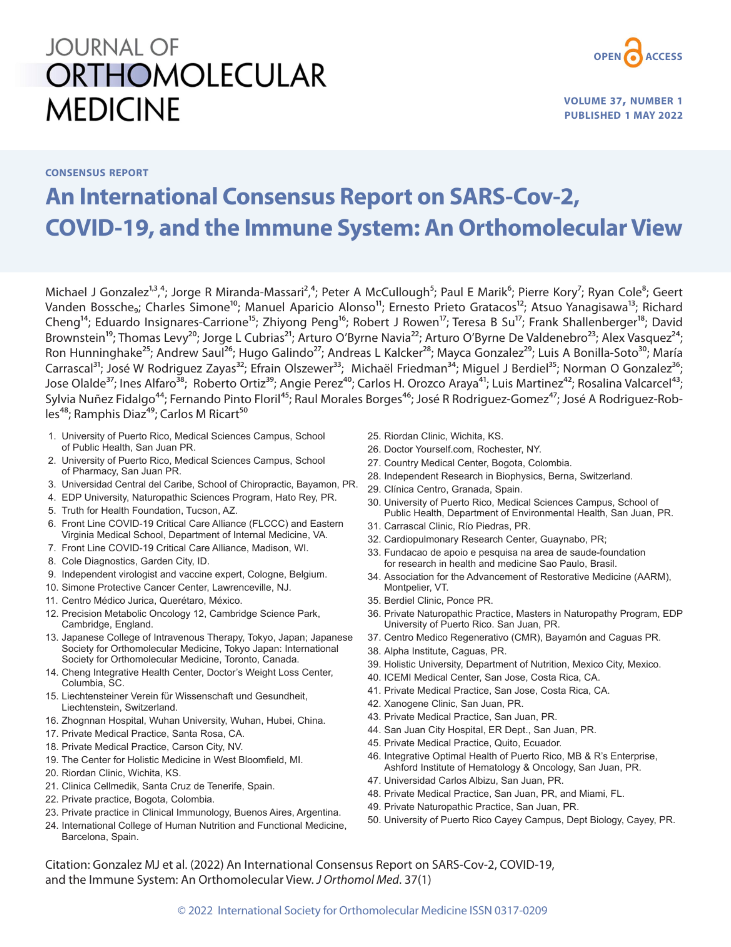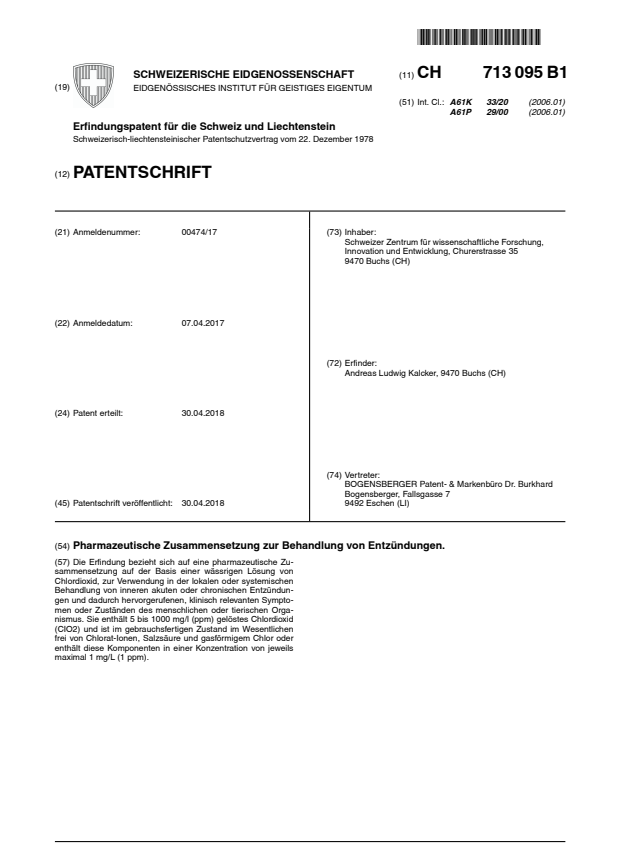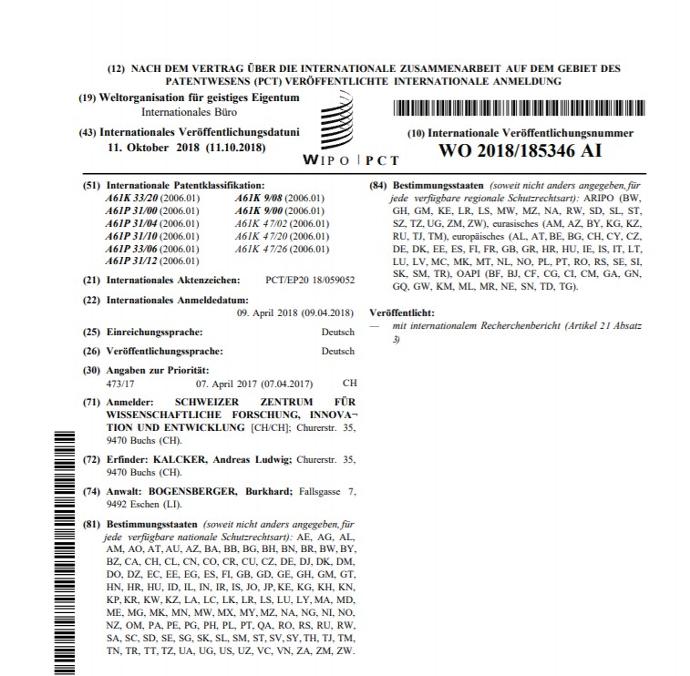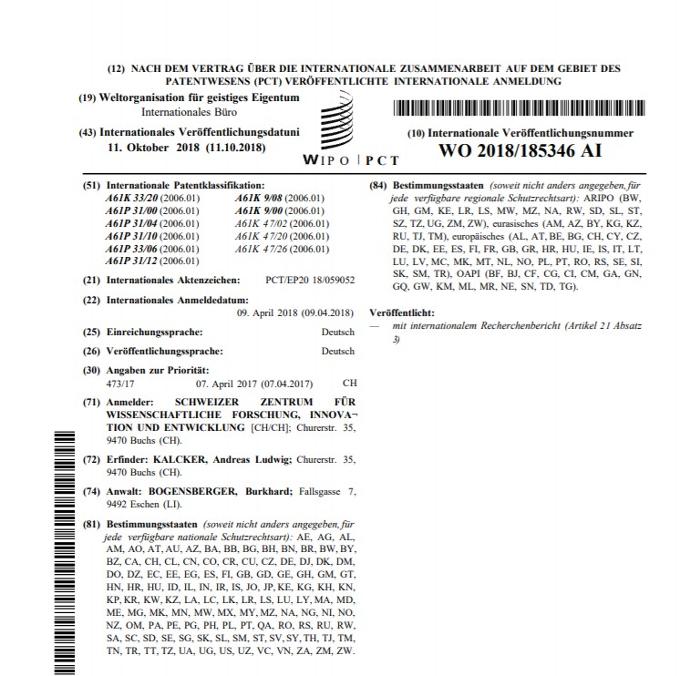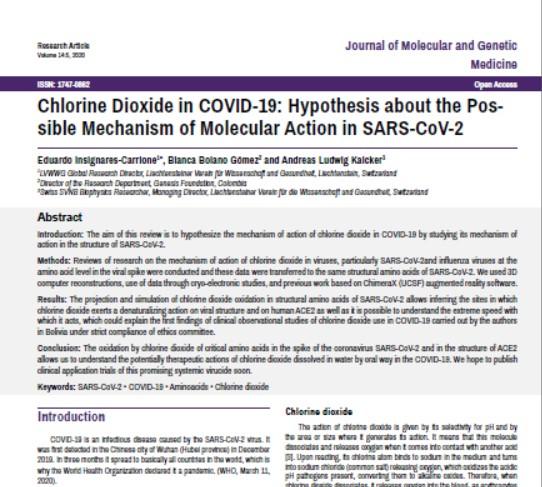Publications
Nº CH719092A2
Pharmaceutical composition for the treatment of several viral and fungal diseases in honey bees.
The invention relates to a pharmaceutical composition and method for the control of multiple viral and fungal diseases in honey bees. It comprises providing of a liquid composition to be consumed by bees.
Nº: WO2018185347A1
PHARMACEUTICAL COMPOSITION FOR THE TREATMENT OF INTERNAL INFLAMMATIONS
The invention relates to a pharmaceutical composition based on an aqueous solution of chlorine dioxide adapted as a solution for rectal intestinal lavage, as a solution for ureteral and bladder lavage or as an isotonic injection or infusion solution for use in the systemic treatment of acute or chronic internal inflammations and clinically relevant symptoms or states of the human or animal organism caused thereby.
The composition contains from 5 to 1000 mg/L (ppm) dissolved chlorine dioxide (ClO2) and is in a ready-to-use state substantially free of chlorate ions, hydrochloric acid and chlorine gas or contains these components in a concentration of not more than 1 mg/L (1 ppm) in each case.
11136- CH ( 00506/20) 30.Abril 2020
PHARMACEUTICAL COMPOSITION FOR THE TREATMENT OF COVID-19
Patent in process
TECHNICAL FIELD:
The present invention relates to a pharmaceutical composition based on an aqueous solution of chlorine dioxide for the therapeutic treatment of infectious diseases caused by coronaviruses, in particular COVID- 19 caused by SARS-CoV2.
Nº: WO2018185346A1
PHARMACEUTICAL COMPOSITION FOR THE TREATMENT OF INFECTIOUS DISEASES
The invention relates to a pharmaceutical composition for the systemic, specifically parenteral treatment of infectious diseases, based on an aqueous, sterile, pyrogen-free solution of chlorine dioxide, containing from 5 to 1000 mg/l (ppm) of dissolved chlorine dioxide (CI02) and preferably from 3 to 10 g/l of an ionic tonicity regulator, optionally in combination with a non-ionic tonicity regulator.
The composition further preferably contains a pH regulator, in particular a pH buffer system, adjusted to a pH of 7.3 to 7.5, and in addition may contain DMSO or MSM. In the ready-to-use state, the composition is free of chlorate ions, hydrochloric acid and chlorine gas, or contains such components in a concentration of at most 1 mg/L (1 ppm) of each.
CHLORINE DIOXIDE IN COVID-19: HYPOTHESIS ABOUT THE POSSIBLE MECHANISM OF MOLECULAR ACTION IN SARS-COV-2
The invention relates to a pharmaceutical composition for the systemic, specifically parenteral treatment of infectious diseases, based on an aqueous, sterile, pyrogen-free solution of chlorine dioxide, containing from 5 to 1000 mg/l (ppm) of dissolved chlorine dioxide (CI02) and preferably from 3 to 10 g/l of an ionic tonicity regulator, optionally in combination with a non-ionic tonicity regulator.
The composition further preferably contains a pH regulator, in particular a pH buffer system, adjusted to a pH of 7.3 to 7.5, and in addition may contain DMSO or MSM. In the ready-to-use state, the composition is free of chlorate ions, hydrochloric acid and chlorine gas, or contains such components in a concentration of at most 1 mg/L (1 ppm) of each.
The SARS CoV2, the coronavirus that causes the disease COVID-19, has caused over 939,000 deaths worldwide to date. Vaccines are currently being validated and antivirals have not shown significant effectiveness. Only dexamethasone has been able to significantly decrease mortality. There are reports that chlorine dioxide (ClO2) is being used for the treatment of COVID-19.
COMUSAV, an association of over 3,000 doctors in Latin America, aims to demonstrate the efficacy of ClO2 in treating this disease. They are currently documenting clinical cases that show a significant decrease in morbidity and mortality in SARS CoV2 infection. Detractors claim that ClO2 damages the kidneys and liver, and also destroys red blood cells. This study evaluated the possibility that oral consumption of this molecule could have toxic effects on the human body.
The results obtained provide biochemical evidence that, in the short term (22 days), oral consumption of ClO2 at 30 ppm/L does not cause renal or hepatic failure, and it does not destroy red blood cells.
Evaluación de a toxicidad del dióxido de cloro:
Alberto Rubio Casillas
Mario Villaseñor Huerta
Martín García de Alba Toscano
Pedro Chávez Zavala
Andreas Kalcker
1-Clinical Laboratory, Autlan Regional Hospital. Servicios de Salud Jalisco, Mexico.
2-Chemistry Laboratory, Regional High School of Autlan, University of Guadalajara, Jalisco, Mexico.
3-President of the Global Coalition for Health and Life (COMUSAV), Mexico.
4-Independent researcher, Switzerland.
Author of correspondence: Alberto Rubio Casillas.
E-mail: https://alberto-rubioc@hotmail.com/
An unprecedented worldwide situation has taken place due to the pandemic related to the SARS- CoV-2 virus.
In addition to a novel infectious disease and an unparalleled global response, COVID-19 also initiated an unparalleled course of action of vaccine research, roduction, testing, and distribution. The sense of urgency around combating the viral pandemic has led to public health decisions based on incomplete and non-evidencebased information. Many issues in relation to the virus SARS-Cov-2, the disease COVID-19, and the immune system need to be addressed, clarified, and put in a proper perspective in order to bring this pandemic to a more objective assessment. This analysis may help manage its many challenges more efficiently, in addition, to providing a true opportunity to reduce complications, deaths, and iatrogenic side effects of either the infection or the vaccination, or both.
The present consensus report has taken this necessary task to provide a common ground to effectively manage this global situation.
